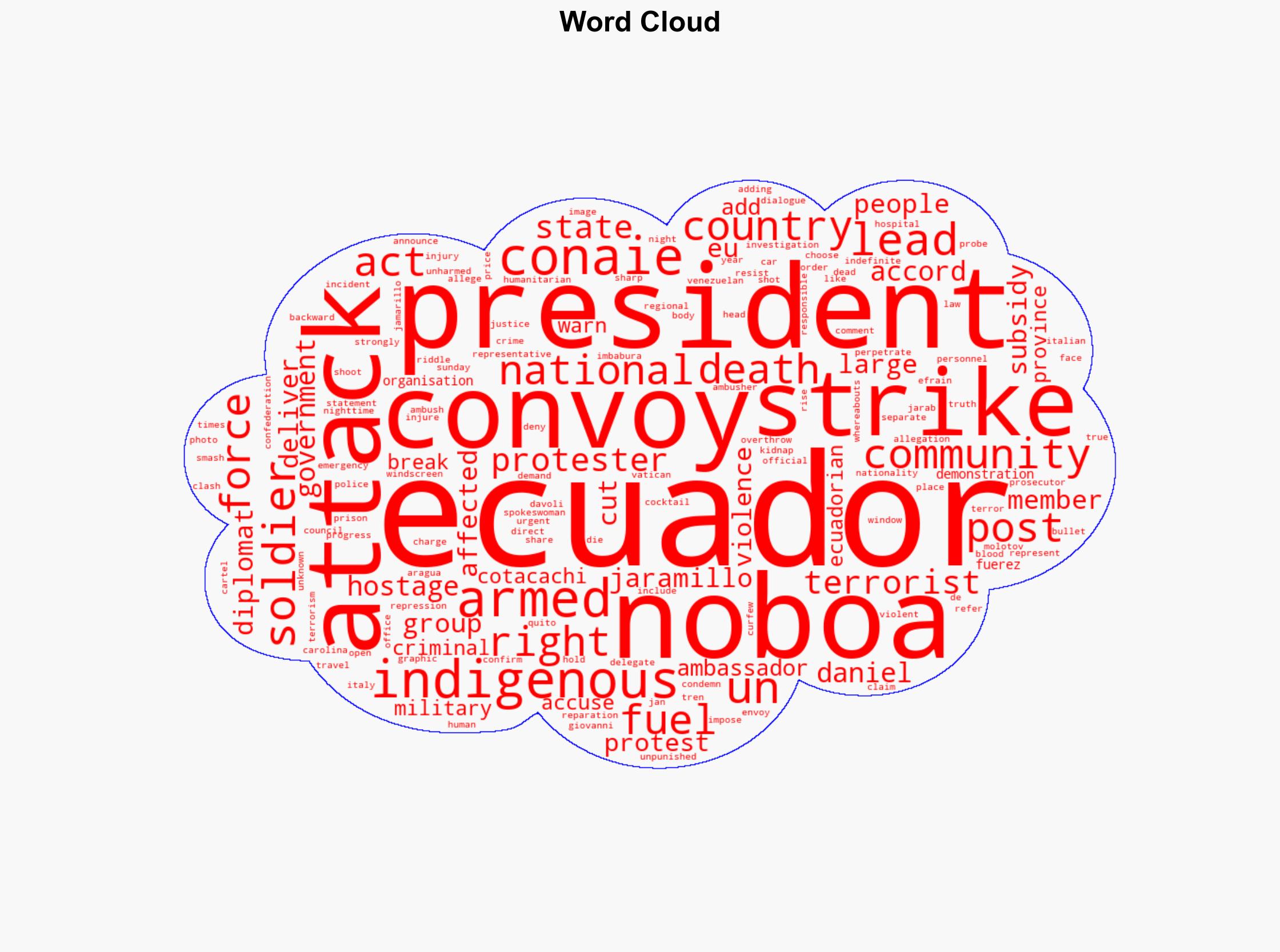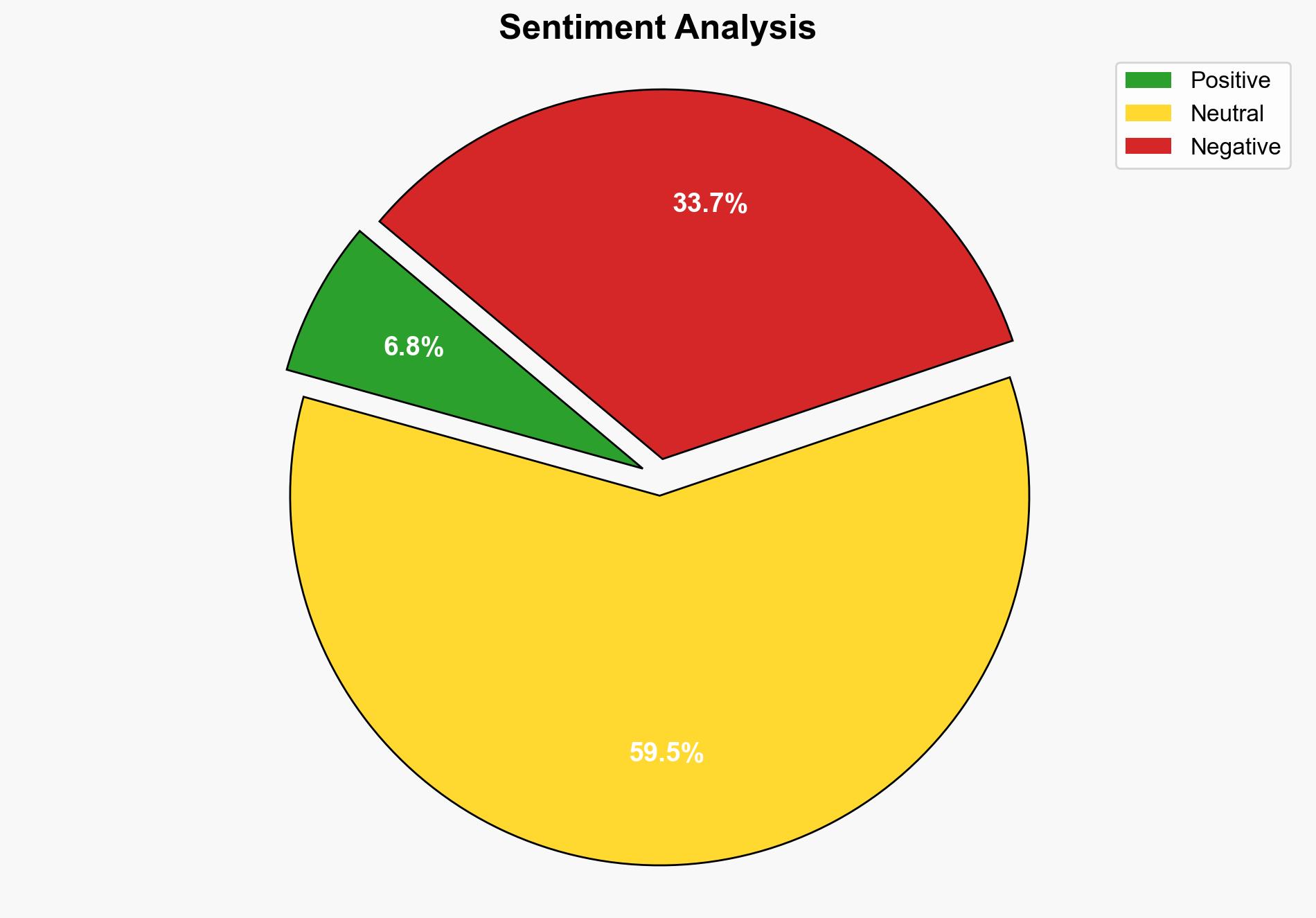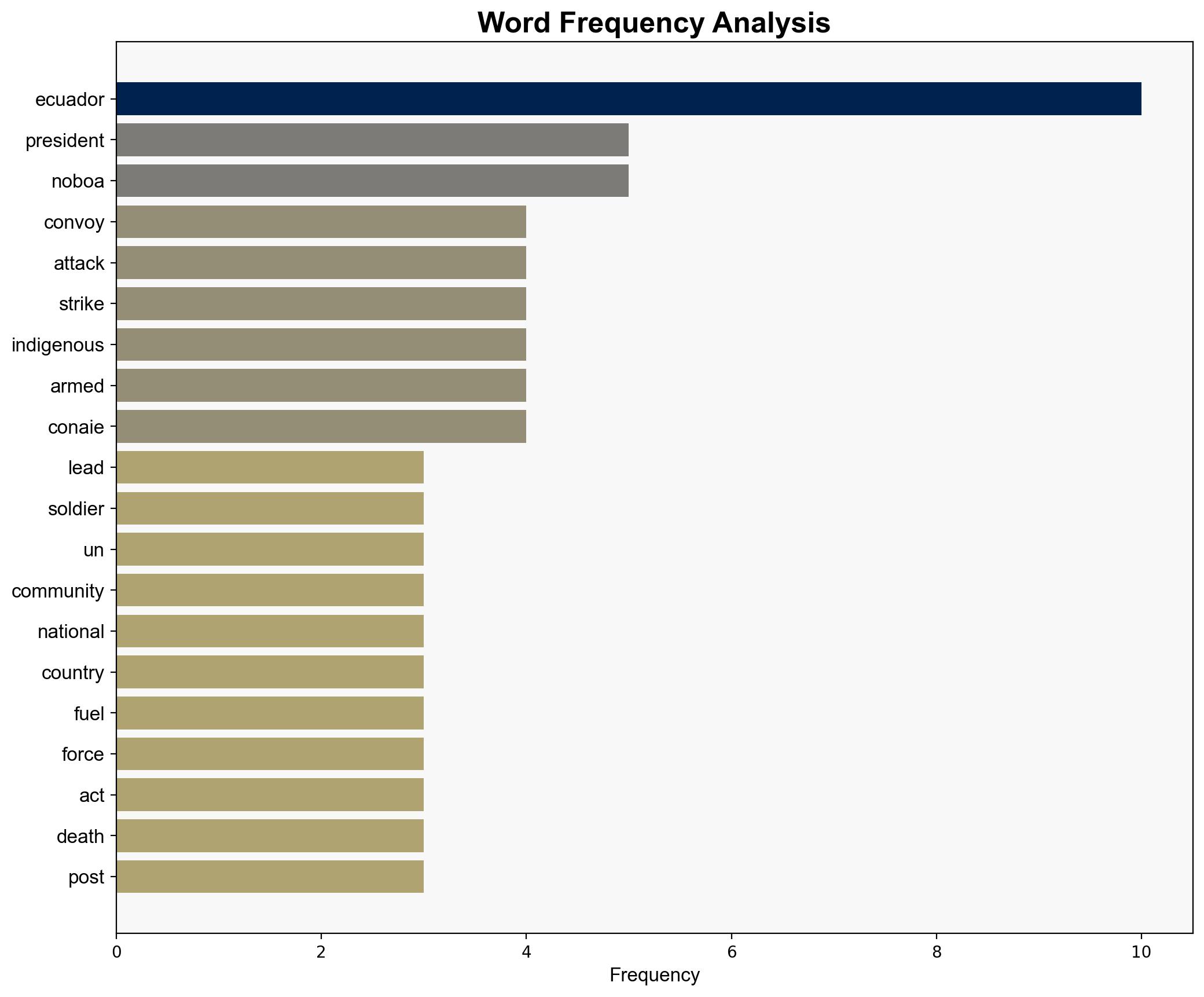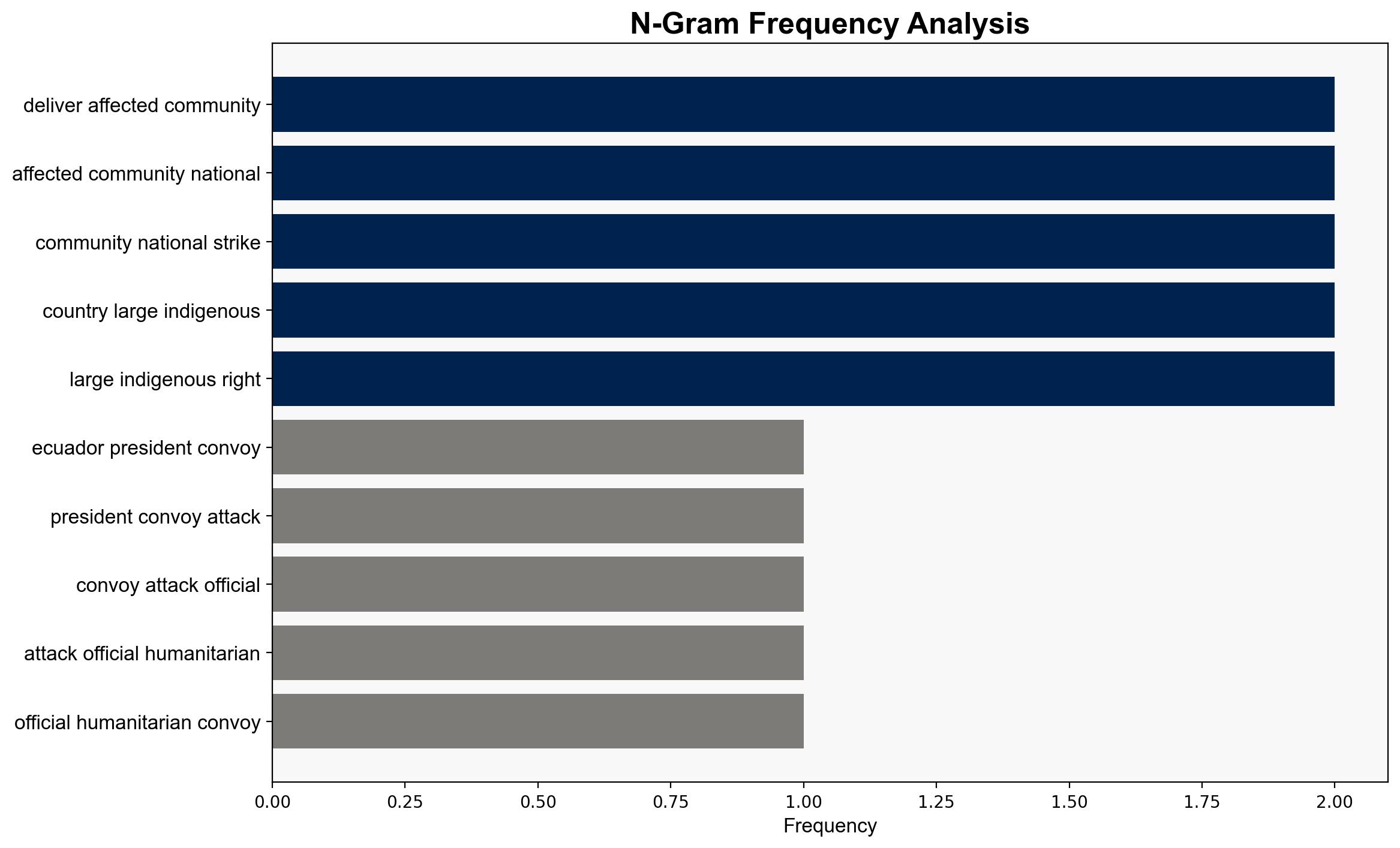Ecuador president’s aid convoy attacked officials say – BBC News
Published on: 2025-09-30
Intelligence Report: Ecuador president’s aid convoy attacked officials say – BBC News
1. BLUF (Bottom Line Up Front)
The most supported hypothesis is that the attack on the Ecuadorian president’s aid convoy was orchestrated by indigenous groups in response to government policies, particularly the fuel subsidy cuts. Confidence level is moderate due to conflicting narratives and lack of conclusive evidence. Recommended action includes initiating dialogue with indigenous leaders to de-escalate tensions and conducting a thorough investigation into the attack.
2. Competing Hypotheses
1. **Indigenous Group Retaliation Hypothesis**: The attack was carried out by indigenous groups, specifically the Confederation of Indigenous Nationalities of Ecuador (CONAIE), as a form of protest against the government’s economic policies, including fuel subsidy cuts.
2. **External Influence Hypothesis**: The attack was influenced or orchestrated by external actors, such as the alleged Venezuelan cartel Tren de Aragua, aiming to destabilize Ecuador by exploiting existing social unrest.
Using Analysis of Competing Hypotheses (ACH), the first hypothesis is better supported by the direct involvement of indigenous groups in the protests, the historical context of similar actions, and their public statements opposing the government’s policies. The second hypothesis lacks direct evidence linking external actors to the attack.
3. Key Assumptions and Red Flags
– **Assumptions**: It is assumed that the indigenous groups have the capability and intent to carry out such attacks. It is also assumed that the government’s narrative is accurate and unbiased.
– **Red Flags**: The absence of clear evidence linking the attackers to CONAIE or external actors. The potential bias in government statements labeling protesters as terrorists without independent verification.
– **Blind Spots**: Limited information on the involvement of external actors and the internal dynamics within indigenous groups.
4. Implications and Strategic Risks
The attack signifies a potential escalation in civil unrest, which could lead to further violence and instability in Ecuador. Economic implications include disruptions to trade and tourism, while geopolitical risks involve potential international condemnation and strained relations with neighboring countries. If external actors are involved, this could indicate a broader regional threat.
5. Recommendations and Outlook
- Initiate dialogue with indigenous leaders to address grievances and reduce tensions.
- Conduct an independent investigation into the attack to establish accountability and prevent future incidents.
- Monitor for signs of external influence or involvement to preempt further destabilization efforts.
- Scenario Projections:
- Best Case: Successful dialogue leads to de-escalation and policy adjustments.
- Worst Case: Continued violence and unrest lead to a state of emergency and international intervention.
- Most Likely: Prolonged protests with intermittent violence, requiring ongoing negotiation efforts.
6. Key Individuals and Entities
– Daniel Noboa
– Carolina Jaramillo
– Jan Jarab
– Giovanni Davoli
– Efrain Fuerez
– Confederation of Indigenous Nationalities of Ecuador (CONAIE)
– Tren de Aragua
7. Thematic Tags
national security threats, counter-terrorism, regional focus, civil unrest, economic policy





